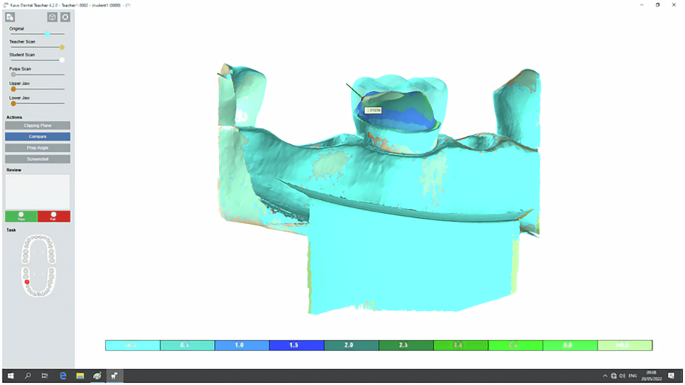Arbutus Biopharma Press Releases - News & Updates
Table of Contents
Remember 2011? Teh iPhone 4S was the hottest gadget, and the world was just starting to grasp the potential of RNA interference (rnai) therapeutics. Tekmira, now Arbutus Biopharma, held a conference call that year, discussing their second-quarter operating results and providing a corporate update. But what seeds were planted then that are now bearing fruit, or perhaps still waiting to sprout?
Back in 2011, RNAi was considered a revolutionary approach to drug development. The idea of silencing specific genes to treat diseases held immense promise. Tekmira, wiht its lipid nanoparticle (LNP) delivery technology, was at the forefront. Fast forward to today, and we’ve seen the first RNAi drugs approved, validating the potential that was so exciting over a decade ago.
What is RNAi and Why Does it Matter?
RNAi is a natural process where small RNA molecules interfere with gene expression, effectively “silencing” specific genes. this is huge because it allows scientists to target the root cause of many diseases, rather than just treating the symptoms. Think of it like cutting off the water supply to a leaky faucet rather of just mopping up the floor.
The Nobel Prize in Physiology or Medicine 2006 was awarded jointly to Andrew Z. Fire and Craig C. Mello for their discovery of RNA interference – gene silencing by double-stranded RNA.
Tekmira’s (now Arbutus Biopharma) LNP technology was, and still is, crucial for delivering RNAi therapeutics effectively. These tiny lipid bubbles encapsulate the RNA molecules, protecting them from degradation and ensuring they reach the target cells. Without effective delivery, RNAi drugs simply wouldn’t work.
The Evolution of LNP Technology
Since 2011, LNP technology has advanced substantially. Researchers have refined the lipid composition, improved targeting capabilities, and enhanced the overall safety profile. These advancements have paved the way for more potent and specific RNAi therapies.
So, what can we expect in the coming years? The field of RNAi therapeutics is rapidly evolving, with several exciting developments on the horizon.
Expanding the Target Landscape
While the first RNAi drugs targeted liver diseases, researchers are now exploring applications in a wider range of conditions, including cancer, cardiovascular disease, and neurological disorders. The key is developing LNPs that can effectively deliver RNAi molecules to these different tissues and cell types.
Personalized RNAi Therapies
Imagine a future where RNAi drugs are tailored to an individual’s unique genetic profile. this is the promise of personalized medicine. By identifying specific gene mutations or expression patterns,doctors could design RNAi therapies that precisely target the underlying cause of a patient’s disease.
“The future of RNAi lies in its ability to be personalized. By combining advanced diagnostics with targeted delivery systems, we can create therapies that are both highly effective and minimize off-target effects,” says Dr. Emily Carter, a leading researcher in RNAi therapeutics at the University of California, San Francisco.
Overcoming Delivery Challenges
One of the biggest challenges in rnai therapeutics is delivering the drugs to the right place in the body. While LNPs have proven effective for liver-targeted therapies, delivering RNAi to other tissues remains a hurdle.Researchers are exploring new delivery methods, such as exosomes and cell-penetrating peptides, to overcome these challenges.
The development and adoption of RNAi therapeutics in the United States are influenced by several factors, including regulatory pathways, reimbursement policies, and the overall healthcare landscape.
FDA Approval and Regulatory Pathways
The FDA plays a crucial role in ensuring the safety and efficacy of RNAi drugs. The approval process is rigorous, requiring extensive preclinical and clinical testing. Though, the FDA has also shown a willingness to expedite the review of promising new therapies, notably for diseases with unmet medical needs.
Reimbursement and Access
The cost of RNAi drugs can be substantial, raising concerns about access and affordability. Reimbursement policies by insurance companies and goverment programs like Medicare and Medicaid will play a critical role in determining whether these therapies are widely available to patients who need them.
Like any new technology, RNAi therapeutics have both advantages and disadvantages.
Pros:
Cons:
- Delivery challenges: Getting the drugs to the right place in the body can be arduous.
- Potential off-target effects: RNAi molecules can sometimes affect unintended genes.
- High cost: RNAi drugs can be expensive to develop and manufacture.
The 2011 Tekmira conference call offered a glimpse into the future of RNAi therapeutics. While challenges remain, the progress made in the past decade is remarkable. as technology continues to advance, RNAi holds the potential to revolutionize the treatment of many diseases and improve the lives of millions of peopel.
Learn More About RNAi Therapeutics
RNAi therapeutics, gene silencing, LNP technology, personalized medicine, drug delivery, Arbutus Biopharma, Tekmira, FDA approval, healthcare reimbursement.
Dr. Anya Sharma,welcome. We’re thrilled to have you lend your expertise as we delve into the world of RNAi therapeutics, especially reflecting on the advancements since Tekmira’s 2011 conference call. Let’s start with the basics. For our readers who might be unfamiliar, can you explain RNAi in simple terms and why it’s such a game-changer in medicine?
Thank you for having me. In essence, RNA interference, or RNAi, is like a “gene silencer.” It’s a natural process that our cells use to control which genes are active and which are not. Scientists have learned to harness this process to create drugs that can precisely target and turn off specific genes that are causing disease. Think of it as turning off the bad software that’s causing your computer to malfunction, rather than just trying to fix the symptoms. The beauty of RNAi is it’s potential to address the root cause of many diseases.
The article mentions Tekmira, now Arbutus biopharma, and their Lipid Nanoparticle (LNP) technology. What’s the meaning of this LNP technology in the context of RNAi therapeutics?
LNP technology is absolutely crucial. RNA molecules are fragile and degrade quickly in the body. They also need to get inside the right cells to do their job. LNPs are like tiny protective bubbles that encapsulate the RNA molecules, shielding them from destruction and delivering them directly to the target cells. Without effective delivery, RNAi therapeutics simply wouldn’t work.Tekmira, now Arbutus Biopharma, were pioneers in this field, and their work laid the foundation for many of the RNAi drugs we see today.
The piece highlights the evolution of LNP technology as 2011. Can you elaborate on the most important advancements and how they’ve improved the effectiveness of RNAi drugs?
Absolutely. Since 2011, we’ve seen significant refinements.We’ve improved the lipid composition to make the LNPs more stable and less likely to cause an immune response. We’ve also made strides in targeting capabilities,meaning we can now design LNPs that are more likely to deliver their RNAi payload to specific tissues or cell types. This allows for more potent and specific RNAi therapies, reducing the potential for off-target effects.
The article touches upon the potential for Personalized RNAi therapies. That sounds very promising, but also complex. What are the key hurdles in bringing this concept to reality?
Personalized rnai therapies is indeed the ultimate goal. Imagine tailoring a drug to an individual’s unique genetic makeup to precisely target the cause of their disease. The biggest hurdle is identifying the specific gene mutations or expression patterns that are driving the disease in each patient. This requires advanced diagnostic tools and sophisticated data analysis. The other challenge is manufacturing personalized RNAi drugs quickly and efficiently. But, the potential benefits are so immense that the investment in research and progress is certainly worthwhile. As Dr. Emily Carter at UCSF wisely stated, combining advanced diagnostics with targeted delivery systems will result in therapies both highly effective and minimizing off-target effects.
Delivery remains a major challenge. What are the most promising alternative delivery methods being explored to expand the submission of RNAi beyond liver diseases?
While lnps have proven effective for liver-targeted therapies, getting RNAi to other tissues is a significant hurdle. Researchers are actively exploring new delivery methods. Exosomes, tiny vesicles naturally released by cells, show promise as natural delivery vehicles. cell-penetrating peptides are another avenue – these are short amino acid sequences that can definitely help RNAi molecules cross cell membranes. The field is also exploring targeted antibodies conjugated to RNAi molecules and even direct injection methods for localized diseases.
What advice would you give to someone reading this article who is diagnosed with a condition that might possibly benefit from RNAi therapeutics? What questions should they be asking their doctor?
The most significant thing is to have an informed discussion with your doctor. Ask if there are any RNAi therapeutics currently approved for your condition or if there are any clinical trials you might be eligible for. Ask about the potential benefits and risks of RNAi therapy, and specifically about the delivery method being used. It’s crucial to understand the status of FDA approval and expected therapeutic benefits. Don’t hesitate to seek a second opinion from a specialist who is learned about RNAi therapies.
How do you see the reimbursement landscape impacting patient access to these potentially life-changing drugs here in the United States?
Reimbursement policies are a critical factor. RNAi drugs can be expensive to develop and manufacture, and that cost is often passed on to the patient. Private insurance companies,as well as government programs like Medicare and Medicaid,will need to establish clear and reasonable reimbursement policies to ensure that RNAi therapies are accessible to the patients who need them. Without adequate reimbursement, many patients simply won’t be able to afford these therapies, regardless of their effectiveness. it’s a complex issue that requires collaboration between pharmaceutical companies, insurance providers, and government agencies.
Any final thoughts for our readers interested in following the progress of RNAi therapeutics?
rnai therapeutics is a rapidly evolving field with immense potential to revolutionize medicine. While challenges remain,the progress we’ve seen in the past decade is remarkable. Continue to stay informed by following reputable sources of scientific news and updates from organizations like the FDA and NIH. the future of medicine is here, and RNAi is undoubtedly a key player in shaping that future.












